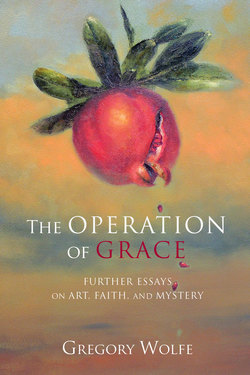Читать книгу The Operation of Grace - Gregory Wolfe - Страница 15
На сайте Литреса книга снята с продажи.
Shouts and Whispers
ОглавлениеHaving been a participant in any number of roundtables and panels on the state of religion in America, and in particular the relationship between faith and culture, I’ve grown accustomed to hearing my conservative colleagues argue that contemporary writers of faith are flabby compared to the more muscular writers of the early- and mid-twentieth century.
The argument goes like this: writers like C. S. Lewis, W. H. Auden, Evelyn Waugh, and Flannery O’Connor created works that offered Christianity as an alternative to modern secularism. Many of them were public converts to the faith, and wrote works in which conversion is the central experience. By contrast, say these critics, writers who have religious concerns these days are more private, more inclined to doubt and ambiguity, more alienated from church authority—in short, ninety-eight-pound weaklings who get sand kicked in their faces.
It’s an especially compelling argument for me because that generation of writers became my teachers and the shapers of my vocation. What I responded to in their writing was the way they discovered literary forms that avoided didacticism and suggested that the old Judeo-Christian tradition could hold its own against Marxism and Freudianism as a “master narrative.” Without being triumphalistic this generation of writers used paradox and irony to sketch out a God-shaped silhouette. A reader might complain to Waugh that the Catholicism depicted in Brideshead Revisited seemed more like the “kiss of death” than a vibrant faith, but for Waugh that kiss was part of a larger vision: the strictures of the Church might seem to bring the characters only grief and loss, yet in the slow workings of grace that suffering would lead to something resembling happiness.
My hunch is that Waugh and his generation owed a large debt to High Modernism, which not only used irony and fragmentation but also epic myths and religious narratives to explore the loss and potential recovery of order.
By contrast, contemporary writers who engage religious faith fall more under the (admittedly problematic) heading of postmodernism: they’re less sure they can, or should, create those big silhouettes. They’re more interested in the scrimshaw of private life. Take, for example, Oscar Hijuelos in Mr. Ives’ Christmas and Alice McDermott in Charming Billy—writers who offer us saints—not in the tragic/heroic mode of Graham Greene’s whiskey priest, but in people whose holiness is furtive, buried deep within the quirks of their personalities.
So the argument that the modern/postmodern divide is about strength versus weakness has a certain plausibility. But the more I have struggled with this issue, the more I find myself returning to the metaphor at the heart of an essay published Image many years ago. The essay, by the novelist Doris Betts, is entitled “How to Whisper” and begins with a brief consideration of Flannery O’Connor’s essay, “The Fiction Writer and His Country.” There O’Connor makes her famous modernist aesthetic profession: “To the hard of hearing you shout, and for the almost-blind you have to draw large and startling figures.”
While Betts loves O’Connor, she claims that her own artistic method involves whispers rather than shouts. “There’s a range of times,” Betts writes, “when Jesus inveighed strongly against a ‘generation of vipers’ and other times when he might stoop and silently scratch words in the ground.” She continues:
Like the descendants of Job’s second cousins once removed, [my characters] struggle through a long weekday process that includes losses and boils until in the end God does not so much answer their questions as silence them, simply by being there, so that my characters end by saying—or maybe whispering—“Mine eye seeth Thee.” Some of them might add: “That is You, isn’t it?”
In the face of wisdom like this, those critics who champion earlier cultural manifestations of muscular Christianity start to sound a bit like schoolyard bullies rather than enlightened intellectuals.
They are also reactionaries rather than conservatives. What they want is to preserve in amber a certain aesthetic form and spiritual stance, even after huge cultural changes have rendered those things obsolete. It is one thing to bemoan the postmodern world, with its relentless consumerism and its secular public square, but it is quite another thing to blame artists for reflecting the times.
There is no way back. You can only move forward, which means that writers and artists have to begin with the way we live now and to somehow find in that unheroic, weekday world the whispers of grace. If people are alienated from authority, ignorant of the richness of their faith tradition, betrayed by religious leaders—if they are lost, wounded, resentful, and doubtful—then those stories have to be told, from the inside out. Genuine doubt is not weakness but strength, a willingness to wrestle with the angel.
Are there some writers and artists who use doubt and ambiguity as a way of dodging what T. S. Eliot called the “Overwhelming Question”? Sure. But the decline-and-fall critics are so sure of themselves that they don’t bother to carefully sift what’s out there. If they did, they’d find more kinship between the whisperers and the shouters than they have imagined.
Artists of faith may work on smaller canvases today, but if they can create exquisite miniatures, then they have done their bit to redeem the time.
